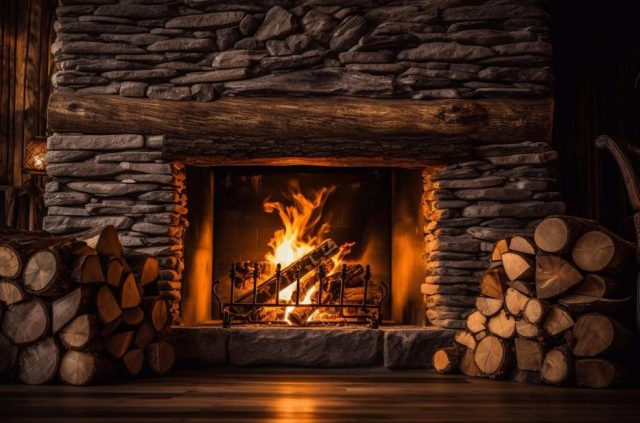Although wood fireplace heaters are efficient and create a cosy atmosphere, they have drawbacks. The average person can fix some of these faults, while others will require the assistance of a trained expert. This wood fireplace-troubleshooting guide will guarantee your appliance’s long life and reliable performance. Occasionally, wood heaters experience the following issues.
· Broken Firebox Or Brick
Overheating the fire or the firebox can cause the firebrick to expand and shrink, eventually cracking the firebrick or the firebox. Cracked firebricks or a damaged firebox can significantly reduce the effectiveness of your wood fireplace heater and represent a severe fire threat if left unrepaired.
· Overuse Of The Fireplace
Overheating can occur in a wood fireplace heater if the homeowner burns too much wood. A chimney fire or cracked fire bricks or firebox are both severe consequences of allowing the fire to burn too hot. You should use only as much seasoned, dry wood as is necessary to achieve the specified heat output.
· There’s Smoke Seeping Into The Room
When the smoke from a wood fireplace heater does not go up the chimney and into the outside air, this problem might develop. A blocked chimney, negative pressure, or a clogged chimney cap are all potential causes of this problem. To fix this, ensure the chimney cap is in good shape, and the chimney is clear of debris.
· The Chimney Is Not Working
Poor draught is caused by a blocked chimney, severe weather, or not starting a draught before lighting the fire. If you want to eliminate the smoke in your room, cleaning the chimney and warming the air in the flue will do the trick. Burning faster-burning, more combustible wood in hotter fires will end the issue.
· A Lack Of Heat From The Wood Heater
Lack of wood is one reason why wood heaters need to produce more heat, but using too much fuel will cause them to overheat. Lack of regular cleaning can produce buildup in the flue or chimney, reducing airflow to the heater. You should sweep the chimney and control how much wood you feed into the stove or fireplace.
· Wood Heaters Produce An Odor When Not In Use
Odour may be caused by moisture within or around the chimney of a wood fire heater. The rain getting into the chimney or burning wet wood are also possible causes of the dampness in the room.
Use dry wood, with a moisture level of no more than twenty-one per cent, to avoid this issue and the musty smell it causes. Burning hotter fires with dry firewood and scheduling annual chimney cleanings should do the trick.
· Chimney Fire
Creosote buildup in a chimney can lead to a chimney fire. An accidental house fire could result from this. A chimney fire can be avoided by having it cleaned regularly by a professional. Ensure only dry, seasoned wood is used for the fire; green wood will cause more smoke and increase creosote buildup.
Importance of Maintaining Your Wood Fireplace Heater
Below are reasons why you should troubleshoot a wood fireplace heater:
- Safety: Routine maintenance can avoid chimney fires and other hazards.
- Efficiency: The amount of wood burnt and heat lost up the chimney can be reduced with regular maintenance on your fireplace heater.
- Longevity: To save money on repairs and replacements, keep up with routine maintenance on your fireplace heater.
- The Quality of Air: The indoor and outdoor air quality can be impacted by the pollutants produced by a poorly maintained fireplace heater. Better air quality and reduced emissions are the results of regular maintenance.
Conclusion
Wood fireplace heaters are effective in cold climates but can cause issues. The preceding section highlighted typical problems and offered recommendations for fixing them. To avoid potential dangers and extend the life of your wood fireplace heater, it is crucial to schedule professional maintenance regularly.

Speaks from heart, always too passionate and driven by emotions. Spins the words with kindness & sharpness, intriguing your ever-inscrutable minds.


